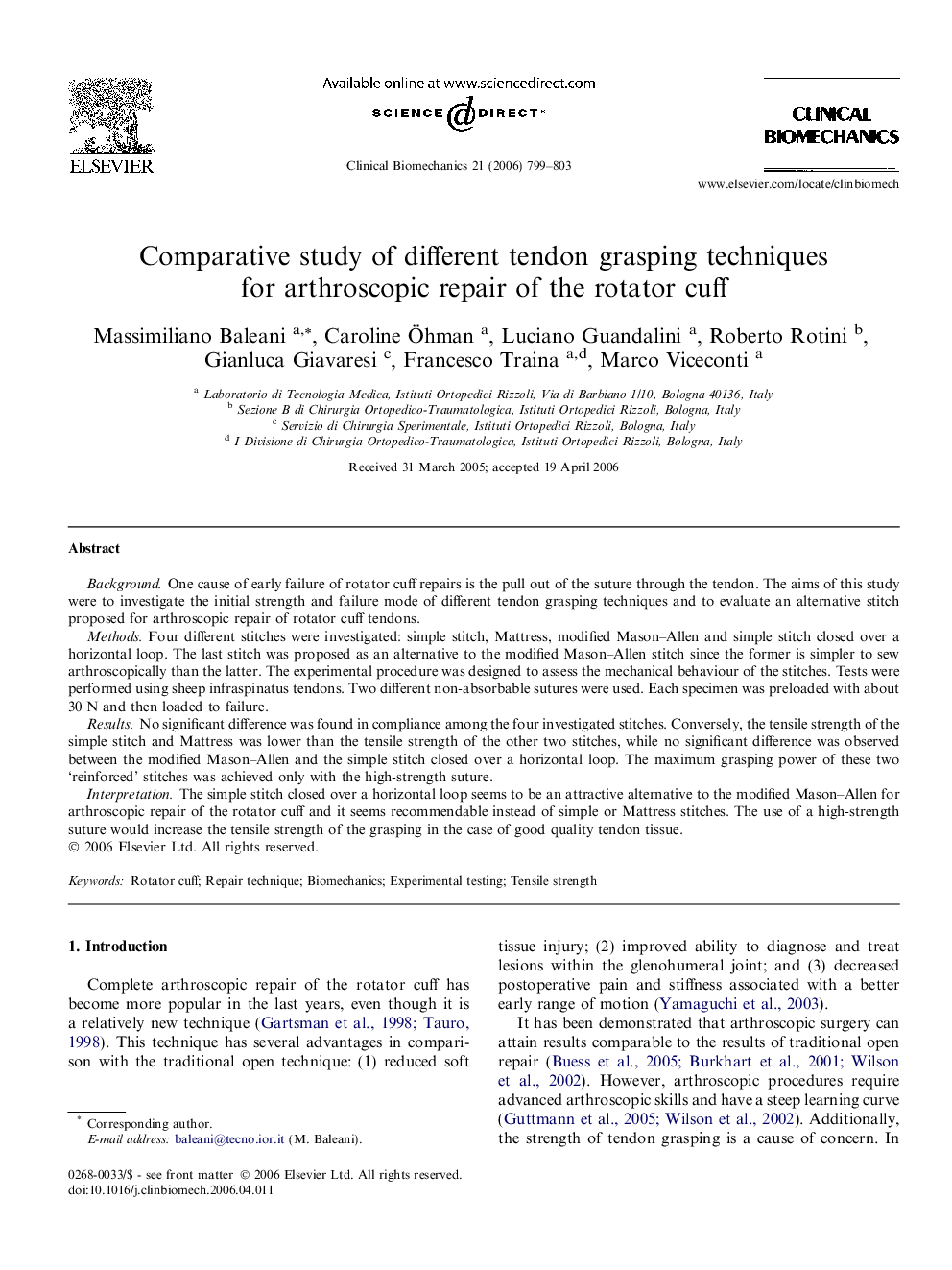| Article ID | Journal | Published Year | Pages | File Type |
|---|---|---|---|---|
| 4051438 | Clinical Biomechanics | 2006 | 5 Pages |
BackgroundOne cause of early failure of rotator cuff repairs is the pull out of the suture through the tendon. The aims of this study were to investigate the initial strength and failure mode of different tendon grasping techniques and to evaluate an alternative stitch proposed for arthroscopic repair of rotator cuff tendons.MethodsFour different stitches were investigated: simple stitch, Mattress, modified Mason–Allen and simple stitch closed over a horizontal loop. The last stitch was proposed as an alternative to the modified Mason–Allen stitch since the former is simpler to sew arthroscopically than the latter. The experimental procedure was designed to assess the mechanical behaviour of the stitches. Tests were performed using sheep infraspinatus tendons. Two different non-absorbable sutures were used. Each specimen was preloaded with about 30 N and then loaded to failure.ResultsNo significant difference was found in compliance among the four investigated stitches. Conversely, the tensile strength of the simple stitch and Mattress was lower than the tensile strength of the other two stitches, while no significant difference was observed between the modified Mason–Allen and the simple stitch closed over a horizontal loop. The maximum grasping power of these two ‘reinforced’ stitches was achieved only with the high-strength suture.InterpretationThe simple stitch closed over a horizontal loop seems to be an attractive alternative to the modified Mason–Allen for arthroscopic repair of the rotator cuff and it seems recommendable instead of simple or Mattress stitches. The use of a high-strength suture would increase the tensile strength of the grasping in the case of good quality tendon tissue.
